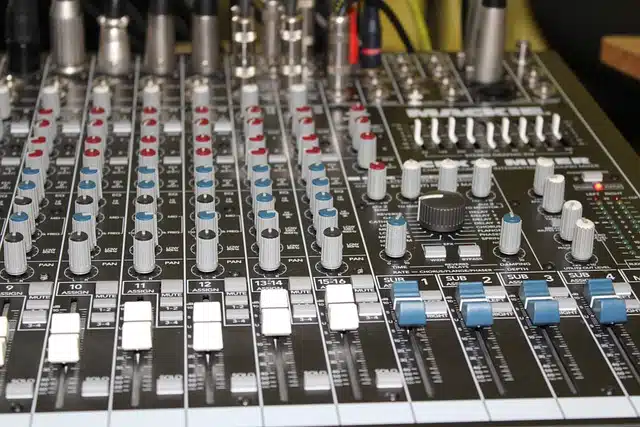
To regulate the volume, the use of a rotary potentiometer is common.
A potentiometer is a device used for measuring electrical potential differences . The term also refers to an adjustable resistance that is part of an electrical circuit .
Variable value resistor
The potentiometer, therefore, is a resistor whose resistance value varies and can be adjusted manually. The maximum resistance of the potentiometer, which is expressed in ohms , determines the value of the device.
If we have a 50,000 (50k) ohm potentiometer , this device can resist up to that figure . Since the minimum is always 0 , the variable resistance of the potentiometer in question goes from 0 to 50,000 ohms .
The potentiometer has three terminals, which are usually called A , B and C or 1 , 2 and 3 . A ( 1 ) and C ( 3 ) are the connection terminals to the circuit , while B ( 2 ) functions as a reference point.
It is possible to differentiate between wirewound potentiometers and printed potentiometers depending on the type of manufacture. According to the operation , we can also distinguish between sliding potentiometers , rotary potentiometers , logarithmic potentiometers and linear variation potentiometers , among others. More details below.
According to the resistance
It is important to remember that a resistance is linked to the difficulty that the electric current finds in passing. Potentiometers are resistors : they introduce a certain resistance between two points. Since the resistance of the potentiometer is variable, this value can be adjusted to modify the voltage (that is, the voltage or potential difference).
The first classification that we can make of potentiometers is related precisely to the type of resistance:
* printed : it is made with a track of carbon or a fusion of metals and ceramic materials known as cermet . The support used is hard, and can be bakelite, prespan cardboard or fiberglass , among others. The ends of the track have contacts and there is also a skate that moves on it, connected to a slider;
* coil : its structure consists of a resistive wire, such as the alloy called constantan , wound and a skate that moves on it with the help of a cursor.
According to your application
* Control potentiometer : it is ideal for controlling the voltage of electronic devices. To do this, the person must operate them with the help of a lever or knob, among other possible elements. Audio equipment uses this for volume adjustment;
* adjustment potentiometer : they also serve to control the tension, but it is done through a prior adjustment that is usually carried out by manufacturers since this is usually not within the user's reach. They can be encapsulated in plastic and have a rotation adjustment (vertical or parallel to the circuit), vertical or horizontal.
The command ones, for their part, are also divided into more than one type:
* rotary : as its name indicates, to control it you must rotate its axis . Since due to the demands of its operation it is the smallest and is least likely to break down, it is the most common;

In the bottom row we see several sliding potentiometers, typical of equalizers.
* sliding : in this case, a straight track is used, so the cursor must travel from one side to the other (either horizontally or vertically). In particular, we can find this type of knob control in graphic equalizers , where its position offers a visual representation of the response. Due to its design, it is larger and more prone to breakdowns than the previous one, in addition to tending to collect dust in its slot;
* multiple : this is more than one potentiometer, all with a single axis in common. This particularity especially saves the space they require. Its most common application can be found in instrumentation circuits and radios, among others.
